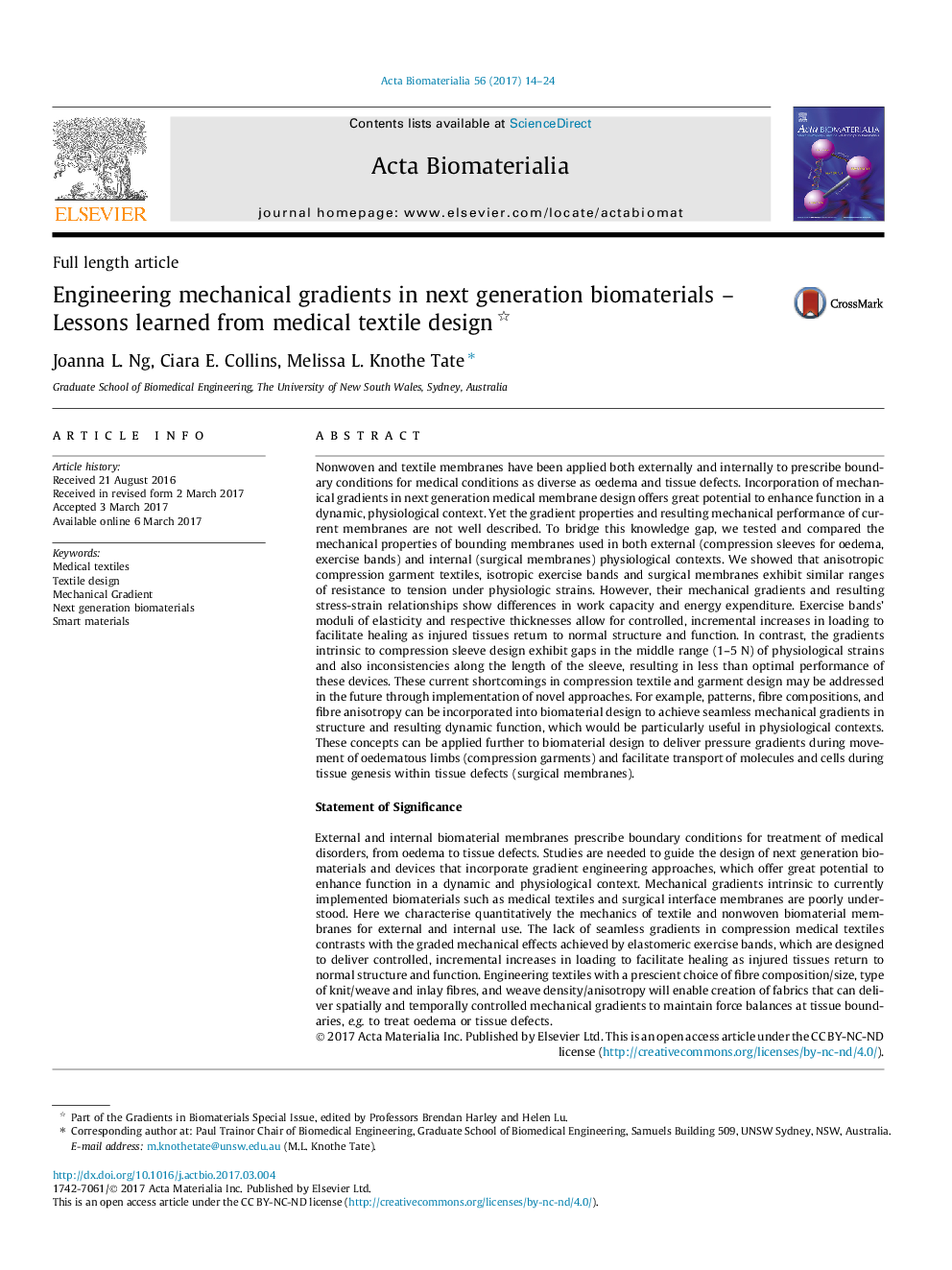| کد مقاله | کد نشریه | سال انتشار | مقاله انگلیسی | نسخه تمام متن |
|---|---|---|---|---|
| 6449181 | 1415930 | 2017 | 11 صفحه PDF | دانلود رایگان |
Nonwoven and textile membranes have been applied both externally and internally to prescribe boundary conditions for medical conditions as diverse as oedema and tissue defects. Incorporation of mechanical gradients in next generation medical membrane design offers great potential to enhance function in a dynamic, physiological context. Yet the gradient properties and resulting mechanical performance of current membranes are not well described. To bridge this knowledge gap, we tested and compared the mechanical properties of bounding membranes used in both external (compression sleeves for oedema, exercise bands) and internal (surgical membranes) physiological contexts. We showed that anisotropic compression garment textiles, isotropic exercise bands and surgical membranes exhibit similar ranges of resistance to tension under physiologic strains. However, their mechanical gradients and resulting stress-strain relationships show differences in work capacity and energy expenditure. Exercise bands' moduli of elasticity and respective thicknesses allow for controlled, incremental increases in loading to facilitate healing as injured tissues return to normal structure and function. In contrast, the gradients intrinsic to compression sleeve design exhibit gaps in the middle range (1-5Â N) of physiological strains and also inconsistencies along the length of the sleeve, resulting in less than optimal performance of these devices. These current shortcomings in compression textile and garment design may be addressed in the future through implementation of novel approaches. For example, patterns, fibre compositions, and fibre anisotropy can be incorporated into biomaterial design to achieve seamless mechanical gradients in structure and resulting dynamic function, which would be particularly useful in physiological contexts. These concepts can be applied further to biomaterial design to deliver pressure gradients during movement of oedematous limbs (compression garments) and facilitate transport of molecules and cells during tissue genesis within tissue defects (surgical membranes).Statement of SignificanceExternal and internal biomaterial membranes prescribe boundary conditions for treatment of medical disorders, from oedema to tissue defects. Studies are needed to guide the design of next generation biomaterials and devices that incorporate gradient engineering approaches, which offer great potential to enhance function in a dynamic and physiological context. Mechanical gradients intrinsic to currently implemented biomaterials such as medical textiles and surgical interface membranes are poorly understood. Here we characterise quantitatively the mechanics of textile and nonwoven biomaterial membranes for external and internal use. The lack of seamless gradients in compression medical textiles contrasts with the graded mechanical effects achieved by elastomeric exercise bands, which are designed to deliver controlled, incremental increases in loading to facilitate healing as injured tissues return to normal structure and function. Engineering textiles with a prescient choice of fibre composition/size, type of knit/weave and inlay fibres, and weave density/anisotropy will enable creation of fabrics that can deliver spatially and temporally controlled mechanical gradients to maintain force balances at tissue boundaries, e.g. to treat oedema or tissue defects.
170
Journal: Acta Biomaterialia - Volume 56, 1 July 2017, Pages 14-24
